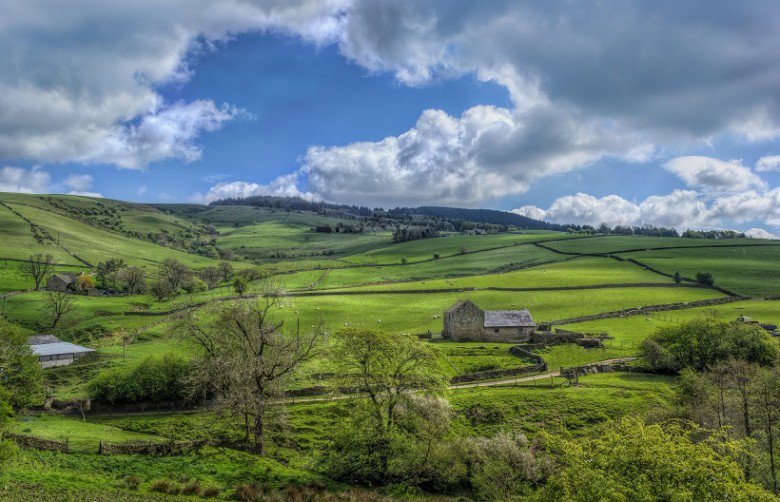COTSWOLD WAY
CATEGORY: ENGLAND
PHOTOS: 1) THE COTSWOLDS
2) GUM DROP FOREST

After finishing The Ridgeway, I went to Bath and walked The Cotswold Way to Chipping Campden, just south of Stratford on Avon. Chipping means a market place. As with The Ridgeway, it was along the top of a range of hills, only this range was called the Cotswold Scarp, and it was much more Grandma Moses-ish. I mean it was more varied in elevation, having lots of hills and dales. The Cotswold was an area of England that had profited financially from wool, starting in the Middle Ages, so the farmsteads and villages were handsome and well built. Even the sheep looked like they took part in profit sharing. Many of the houses had thatched roofs and were built of Cotswold stone, a buff-colored sandstone.
This was the main place where the trail went across fields–where I encountered stiles and the afore mentioned cow muck.
Here is a list of Cotswold highlights:
-A red fox crossed the trail right in front of me. It is the only red fox I have ever seen. At the bed and breakfast where I stayed that night, I overheard the men talking about hunting foxes. There must have been an oversupply of them in that area (just like coyotes at home) and the farmers had to protect their sheep. It seems to always be exciting for men to out-fox a fox.
-Many of the buildings made of Cotswold stone had flowers growing directly out of the rock walls. These were mostly yellow Corydalis and pink, red, and white Valerian. Or Centranthus: same thing.
-I passed a stone barn, the walls of which were completely covered with a vine that had exquisite little lilac-blue flowers with yellow cone-shaped centers. I asked the farmer what kind of vine it was, and he said it was a “potato vine.” A POTATO vine!!!??? After I got home, I looked it up. It is Solanum crispum. It cannot grow where there is much freezing in winter, an indicator of the climate of the Cotswolds.

I walked down a hill into the picturesque little town of Painswick and right up to a very large churchyard that was planted chock-a-block with yew trees that had all been trimmed–albeit in some semblance of their individual shapes. It was the closest to a gum drop forest that I have ever seen. I learned that there were over a hundred trees and that they trim them every fall. However, instead of saying how many there really are, they say there are over ninety nine trees because “the devil would kill the hundredth tree.”
-I took side trips to Hidcote Gardens and Burton House Gardens. In England one must see all the gardens one possibly can.
The Cotswold Hills are one of the most calmly beautiful places on earth.
